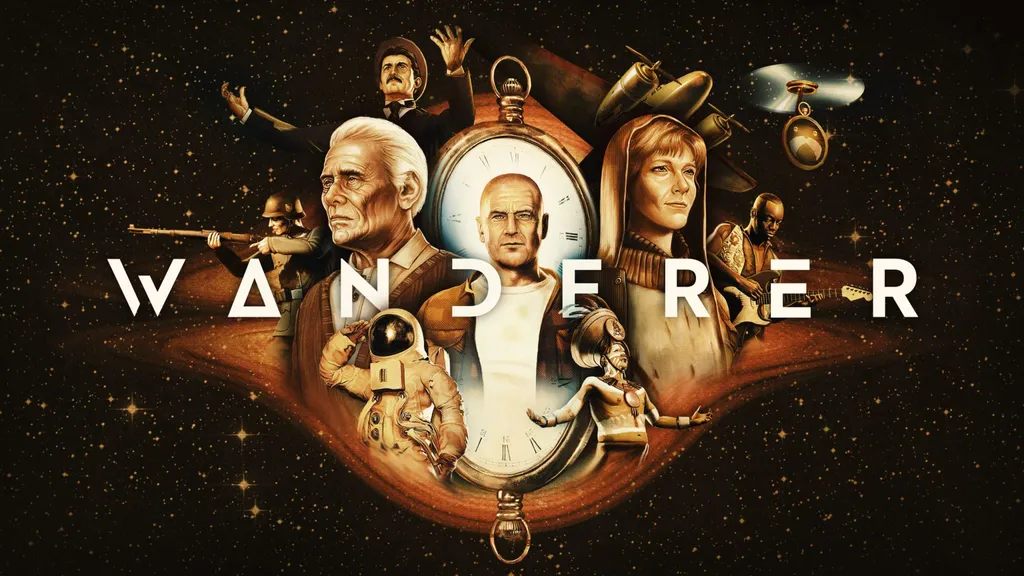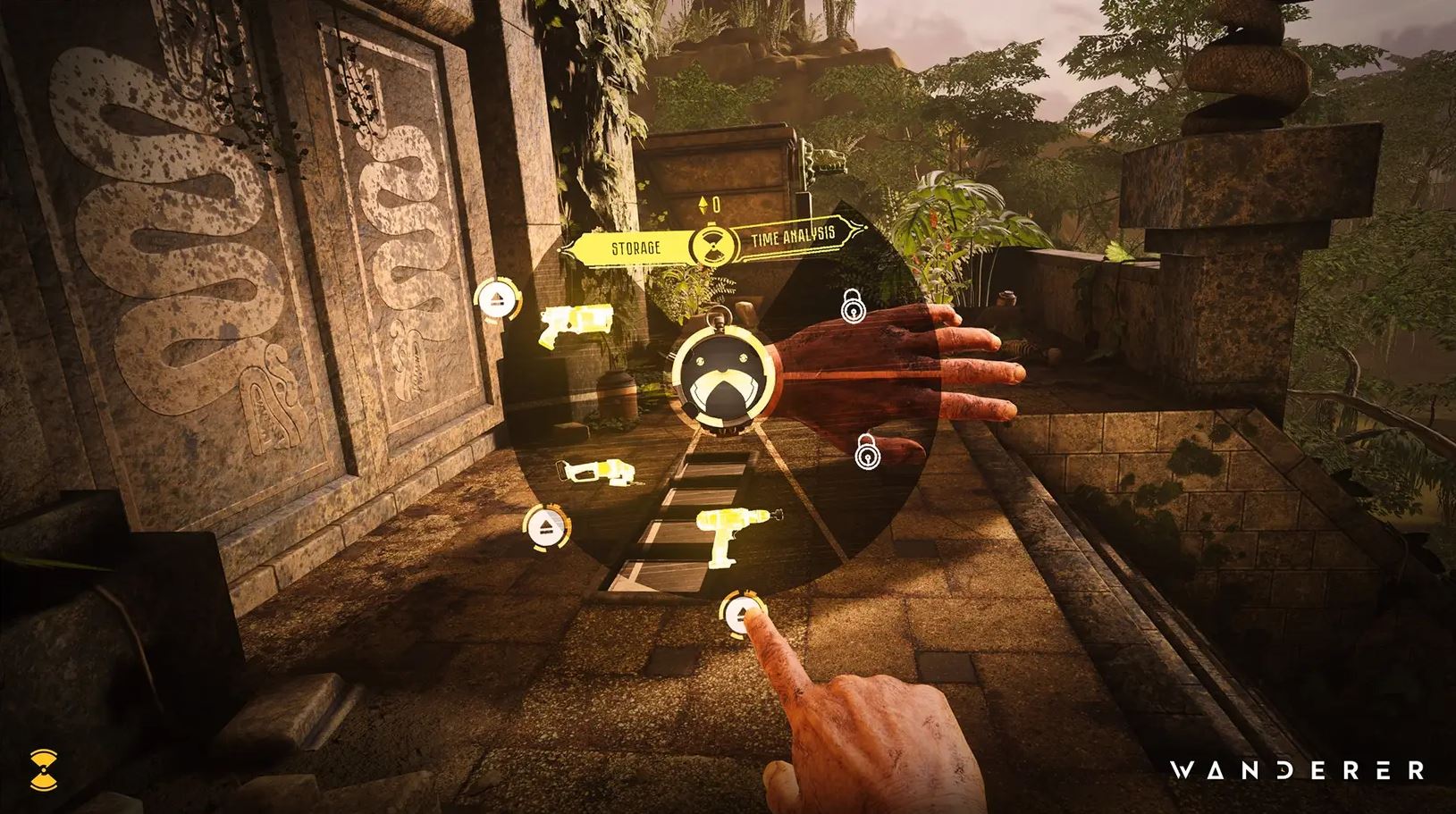Some design bumps and bugs don’t stop Wanderer from delivering an enormously enjoyable adventure. Here’s our full Wanderer review.
At its heart, Wanderer is an escape room game but, please, trust me when I say that shouldn’t put you off. Even if you’re not a fan of puzzle games — and I’m certainly no great admirer of them — M-Theory and Oddboy’s debut game is more than worth a look. That’s partly because it manages to disguise many of its brain-teasers more as fun, interactive problem solving, and partly because it’s one of the best-looking and most immersive VR games to release in recent memory. Put simply, Wanderer is a shot in the arm for VR fidelity.
We’re in the future, and the future isn’t looking very bright. Wanderer is all about traveling back to the past to right wrongs and ultimately ‘fix’ the post-apocalyptic present the game opens to. To do this, you uncover your grandfather’s secret hideout hidden amongst the ruins of Boston, befriend a talking watch called Samuel, and then hop back and forth between the moon, wartime Germany, ancient civilizations, and more as you’re hunted by evil space cops that don’t like you messing with time.
It’s a lot to take in and Wanderer is, indeed, a lot. There are a thousand different threads to follow at any one time and the overarching plot definitely falls victim to lengthy exposition and multiple underdeveloped characters, but the game itself expertly realizes the potential of time-spanning puzzles and the ability to bring different items to different points in history.
[vc_row][vc_column][vc_cta h2=””]Wanderer Review – The Facts
What is it?: A VR escape room adventure in which you travel through time, solving puzzles to fix the present.
Platforms: PC VR, PSVR
Release Date: Out now
Price: $39.99[/vc_cta][/vc_column][/vc_row][vc_row][vc_column][vc_column_text]
For example, to hop around the timeline, you find special items that you essentially feed to Samuel. A brilliant white light and a Hans Zimmer ‘bwarm’ then near-instantly transport you to your new destination. Playing on PC, it’s pretty incredible to take in just how responsive the time-traveling is; in one moment I can be standing in front of an ancient temple and then, within the space of about 10 seconds, I can remove an item to travel back to my hideout, insert another item and find myself standing in front of Nikola Tesla.
It’s a truly impressive achievement that capitalizes on the joy of immersing yourself in a wide variety of environments in VR, bolstered by the fact that every element of Wanderer’s world — from its characters to its level design — is tightly crafted. Samuel, in particular, is a wonderful creation, with the air of a southern prospector funneling through his wonderfully bushy digital mustache. Press a button on the side of your wrist and he jettisons out of your watch strap, deploying tiny propellers to keep him airborne as he surveys the environment to give you hints. He’s just a really, really brilliant creation.
Of course, it also helps that the game is a real treat for the eyes. Wanderer is easily the best-looking VR game since Lone Echo 2 and, given that was an Oculus PC exclusive, probably the best-looking title many have seen since Alyx. The game’s opening in a flooded Boston hits that home with crisp, dense vegetation that reminds you of the Seattle sequence in The Last of Us Part 2, and each of its levels is similarly littered with convincing detail. Not only that but practically everything can be picked up and used in some way, shape or form, really rooting you inside the world.
Puzzles, meanwhile, are mostly well-paced and rewarding, often involving mechanics that utilize VR in varying ways. One early highlight involves lining up projections of constellations with a security panel and then tracing the outlines with your other hand, and there’s also obsessive note-taking on a blackboard as you study morse code, steering explosive RC cars, and, uh, licking frogs among other ideas. At its best, the game disguises any trite repetition and doubles down on these immersive solutions, delivering something that often doesn’t actually feel like an escape room experience.
It’s only when you take a step back from a play session that you realize that’s what you’ve essentially been doing for the last few hours. And, impressively, Wanderer runs at around 10 hours and only repeats a handful of these ideas throughout – there’s not much room for any of them to grow stale.
Inevitably, you’re going to hit a wall now and again and I felt that familiar frustration as I paced back and forth trying to make sense of some challenges but, as someone that would nope out of most other puzzle games after a few hours of roadblocks, the pacing here felt mostly on-point.
In fact, the only thing holding the game back in these moments are some of its bugs and design issues. Samuel’s hints, for example, don’t always match up with where you are in the game, and I lost an hour or two wondering what to do next when simply reloading the game would bring him back up to speed and give me the right advice.
Wanderer also has a persistent item system, meaning wherever you place an object is usually where it stays until you pick it up again. In theory, it’s a great idea to give the world consistency and another impressive technical undertaking, but the reality is a fair bit more frustrating. There’s no easier way to ruin a lightbulb moment than by realizing you can’t remember where the item you need to solve a puzzle is located across — quite literally — space and time, and at one point I even had to reset a chapter to put things back where they were originally found.
[vc_row][vc_column][vc_cta h2=””]Wanderer Review – Nitpicks
Beyond the bugs I’ve mentioned in the core review, Wanderer also has some other issues. I encountered two hard crashes in my playthrough that required me to reset the game. I also had issues with sound cutting out in the opening menu and when I first booted up a save file. A lack of manual saving also meant having to repeat some tasks when I returned to the game after some time.
Nitpicks are issues we’ve found in a game that are likely to be cleared out in an upcoming patch. We don’t generally let them affect a game’s score if they don’t massively upset the overall experience, but you might want to check that they’ve been addressed before deciding to pick something up. [/vc_cta][/vc_column][/vc_row][vc_row][vc_column][vc_column_text]
There is a limited inventory system that starts out with letting you hold one additional item and ramps up to five items as you collect hidden objects used to upgrade Samuel’s storage. While it’s nice to have a meaningful upgrade system embedded in the game, it slows progress to a crawl having to constantly jump back and forth between worlds with different items because your inventory is full, and even the maxed-out amount of slots fill up fast.
Controls are another sticky point. A lot of interactions in Wanderer work as expected, but some repeated mechanics need work. Turning dials, for example, seems to struggle with the position of your hand, and either twists in the wrong direction or simply doesn’t move, and I struggled to steer the RC car.
These issues hold Wanderer back to some degree but this is a game about instances that transcend those more trivial aspects. Bringing together a bunch of sulking bandmates from a psychedelic rock band and then heading onstage to a crowd of thousands, or standing next to Tesla as he makes a life-changing discovery are just a few of the moments in which the game shines.
Wanderer Review – Final Impressions
Wanderer stumbles in a few important areas. It’s so focused on delivering a believable experience that some of its design decisions don’t sit well, and its story gets lost amongst the time-hopping spectacle. But it’s also a ridiculously ambitious game that somehow achieves almost everything else it sets out to accomplish. It’s a technical marvel that offers up dense, highly-detailed worlds that you can jump between in a blink of an eye, with deep interactivity embedded into each. Its puzzles are often finely tuned for VR and are well-paced to minimize frustrating roadblocks, and you have a tangible presence in each world thanks to smart interactions. The result is an enormously enjoyable 10+ hour adventure that makes the normal trials and tribulations of the escape room genre often feel like a distant memory.
For more on how we arrived at this rating, read our review guidelines. What did you make of our Wanderer review? Let us know in the comments below!






























